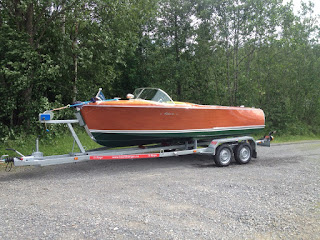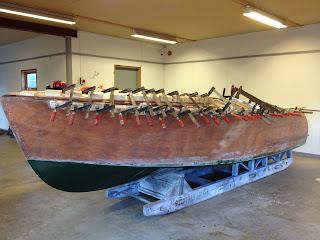First event of the summer of 2015 was the "Free Speed" event and boat show in south central Sweden (www.frifart.se) an awesome event with classic wood and fiberglass boats. Had a great time, and took home the judges award for Best in Show.
Boat is named "RUBIA", Spanish for blondie from the natural Khaya mahogany blond decks.
On water in the ocean in southern Norway, outside Kristiansand.
Had a beautiful summer with the boat. The engine is again removed from the boat, for a full overhaul of block and gearbox. Will be ready for use again next summer.














































